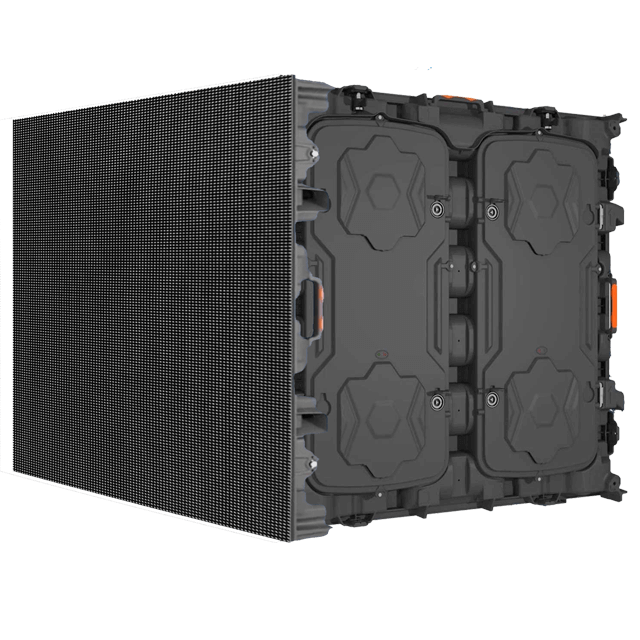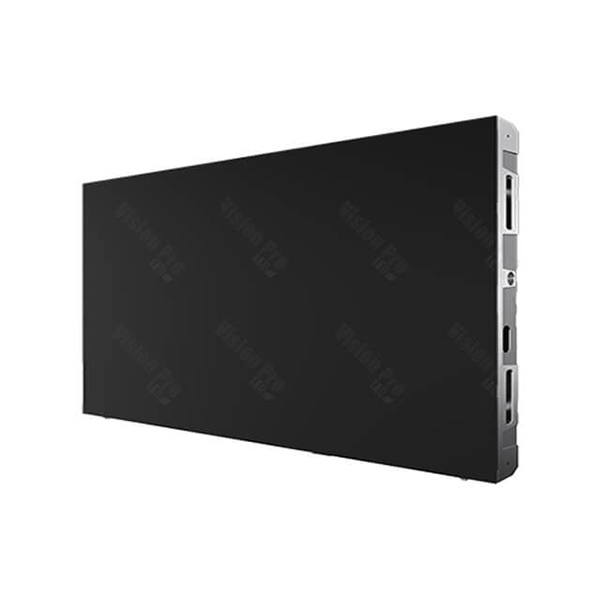LED and LCD displays are both good technologies, and which is better depends on your application. LCD is a liquid crystal display. Commercial LED displays are a grid or group of Light-Emitting Diodes or LEDs that make up the image itself. To make things even more confusing, commercial, or Direct-View LEDs, are actually very different than their consumer LED cousins. Here are the basics to help you understand what’s the difference between LED and LCD displays and which is better for your project.

LCD
LCD displays are an option for either indoor or outdoor signage. The LCD screen is a series of layers, like an onion. LCD displays have lighting on the base layer. Then comes the LCD sheet, which is a liquid housed between two plates. On top is a protective glass layer. If the display is meant for the outdoors, a final coating is added to protect against the elements- whether they’re natural, like weather, or human-caused, like vandalism.
LCD Layers
LCD panels are made of a layer of liquid crystal between two pieces of polarized glass. The liquid crystal can not emit light. Backlights are therefore used to illuminate the display. LCD panels are sleek in design but typically limited to specific sets of dimensions.
LED Display
LED uses individual pixels that make up the image itself. Pixel pitch is an important concept with LED displays. Pixel pitch is the distance from the center of a one-pixel cluster to the center of the next pixel cluster in a LED screen.

Differences between LED displays and LCD displays.
Pixel pitch
The LED display is made up of different panels. These panels can be grouped into various shapes providing flexibility and scalability. Unlike LCD displays, LED video walls don’t have bezel lines between each panel. Various LED displays feature bezel-less panels, which are placed together like building blocks. This LED technology creates a seamless viewing experience even for large-scale video walls.
Dimensions
LED technology is modular in nature. This means that LED panels fit together seamlessly and can be used to make displays fit any space. Custom cabinets can even be built to accommodate unusual shapes or dimensions.
Size
LED displays also win in terms of thickness, or lack thereof. The reason, once again, being the advanced lighting technology. To start with, light-emitting diodes are much smaller compared to the fluorescent lamps used in LCD displays.
Secondly, when the LEDs are placed at the edges as opposed to the back end of the display, the resulting screen will obviously be thinner. This explains why edge-lit LED screens are the slimmest displays available.
Maintenance
LED technology is easily maintained. Individual modules and even individual diodes can be replaced.
LCD video walls require that when one LCD screen goes out, that whole screen needs replaced.
It’s generally accepted that LED displays have the lowest energy consumption levels of all displays. Having considered all of these factors, you should now be excellently equipped to pick a display for your video wall. Be sure to take good care of your screen for maximum longevity.
If you’re looking for a LED display, Get in touch with us to arrange a consultation. Our main product includes: rental led display, small pixel pitch led display,sports led display, etc. surely we support customized led display.
By continuing to use the site you agree to our privacy policy Terms and Conditions.